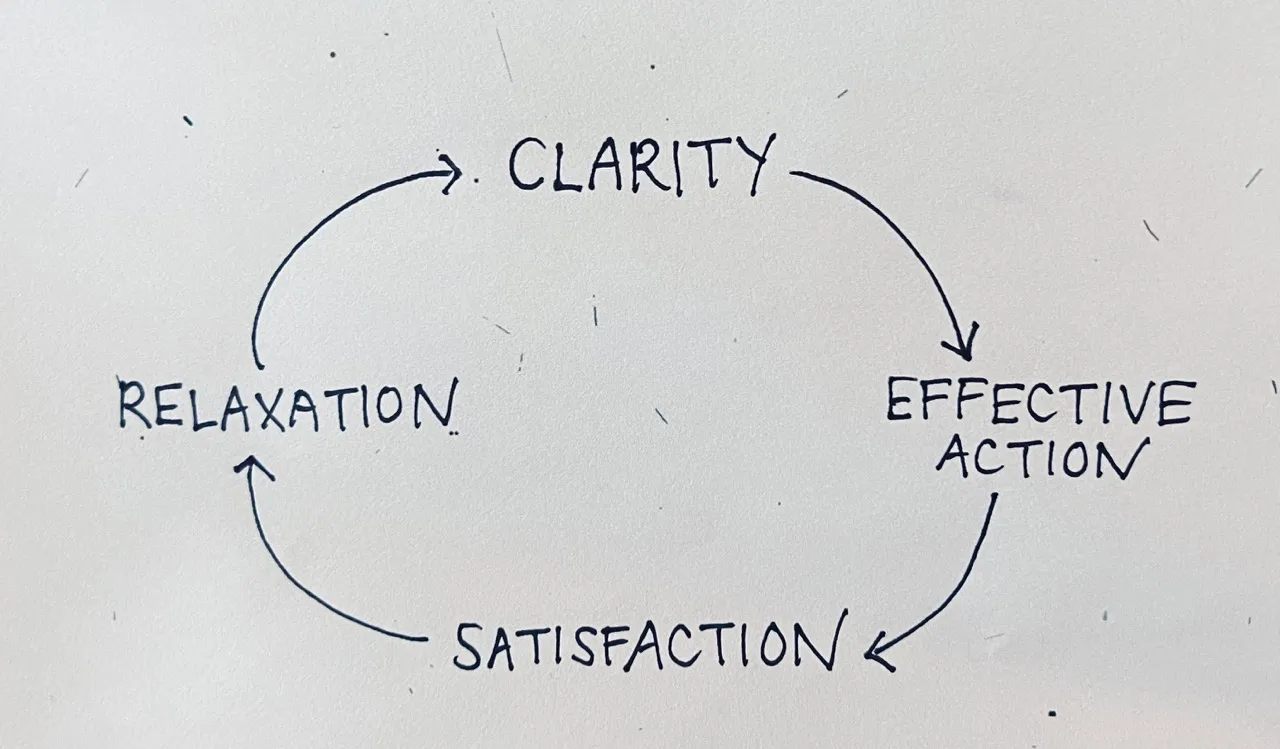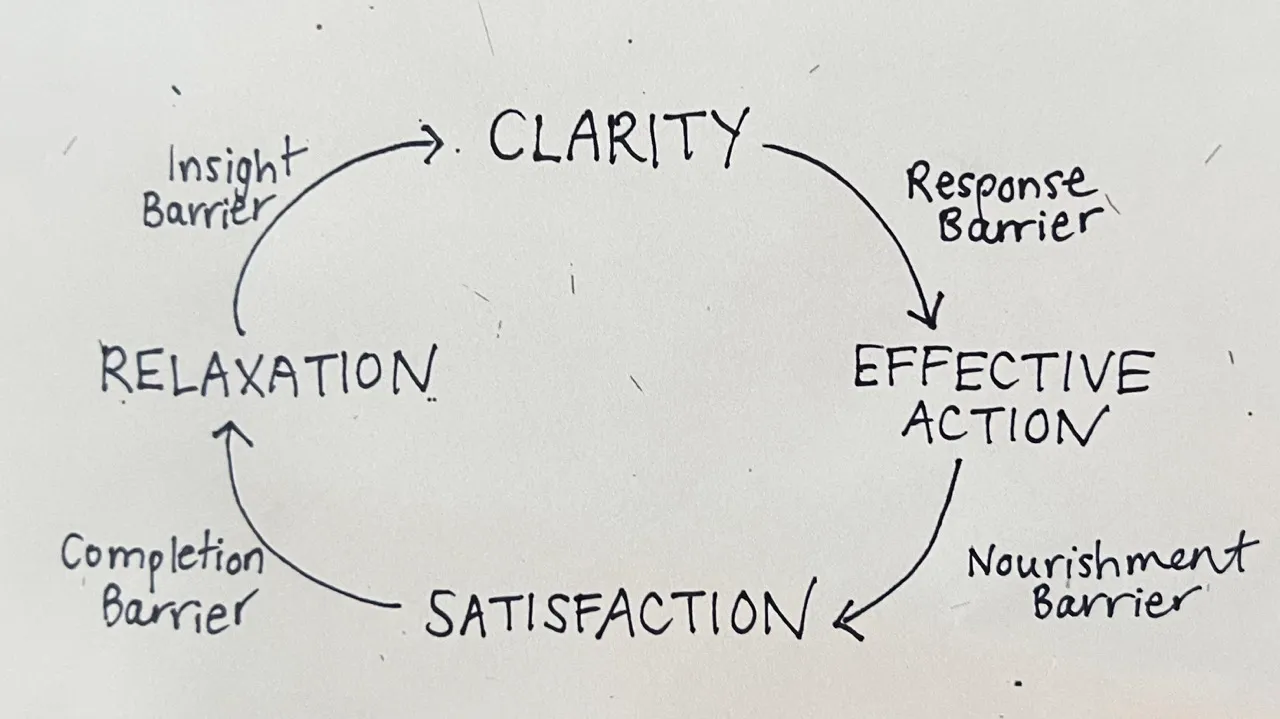
Self-study is a natural part of the universal human endeavor to free ourselves from suffering, the inevitable suffering that results from ignorance of who we are and how the world hangs together. Self-study is the path taken by all who work to understand themselves. It leads beyond half-remembered hurts and failed beliefs, beyond all that lingers unexamined in the body-mind. That deep desire to know ourselves has given rise to all manner of heroic labors. It is a cousin to the sciences of life and to many religions. — Ron Kurtz
As a young man studying computer electronics and physics, Ron Kurtz became fascinated by how things work, and how systems influence each other. He read systems theory, psychology, philosophy, physics, biology, anthropology, mysticism, meditation. He got curious about therapeutic applications of mindfulness and non-violence, psychological healing, and the evolution of consciousness. He felt that developing the right skills and attitudes towards our own process was necessary to understanding how the world works and how to heal the violence in the world. Over time, he began creating a system of body-centered psychotherapy that integrated and drew from many other disciplines and philosophies. Eventually, this integrative system would be called Hakomi.
"Hakomi" is a Hopi Indian word meaning, "Who are you?" or "How do you stand in relation to these many realms?" Kurtz believed that the role of the healing space is to help individuals explore the complex web of relationships that form their identities. He viewed people as systems whose behaviors, thoughts, and feelings are organized around "core material": memories, images, and neural patterns. Core beliefs are then developed as a response to these subjective experiences, and typically become a place that we unconsciously act from.
Beliefs are the program that runs the computer. It exerts its influence by organizing our responses to major themes of life: safety, belonging, power, freedom, vulnerability, control, responsibility, love, sexuality, spirituality, etc. Some of this material supports our being, while some of it, learned in response to acute or chronic stress or trauma, continues to limit us. In Hakomi, you work to distinguish between the two by bringing previously unconscious and automatic behavior patterns into conscious awareness, creating the possibility of choice in how we think and what we do. Doing so can invite the opportunity to change material that restricts our wholeness. The experience of being beaten and abused by my father because I was unable to finish my track race in 5th grade was a core moment that contributed to a belief that I am not lovable if I am not perfect. This created many moments of unnecessary, irrational suffering in my life, yet also contributed to values I hold for quality and a strong work ethic, which has served me well on many levels. Being able to hold our core beliefs in integrative ways is an indicator of real healing and authentic living, where we refrain from denying or shaming any part of ourselves. Instead, we include all parts and discover the right place for them in the larger wholeness of who we are.
In Hakomi, the healing process starts by accessing different states of consciousness through mindfulness, characterized by heightened sensitivity and attention turned inward towards present experience without judgment or effort. There are many kinds of awareness to pay attention to here: thoughts, sensations, tensions, feelings, movements, images, impulses, memories. Non-verbal expression reveals more than verbal stories about our core beliefs. By staying with and paying attention to any one of these, the experience becomes more vivid and deepens into awareness, often evoking experiences that lead to the discovery of organizing core material.
A foundational Hakomi principle is mind-body holism. The body is a constant reflection of our beliefs, our way of being in the world, our way of organizing our experience. It stores information that our mind, in its busyness, doesn't notice. Beliefs originating in the mind influence posture, body structure, gesture, facial expression, emotions, etc. Feedback from chronic bodily mobilizations and tensions confirm and reinforce belief systems.
Holding space for the body's natural defense system when we're feeling vulnerable or unsafe is of critical importance. When our defenses are up, it makes it difficult and sometimes impossible to go inside and learn about the parts that needs protection. Therefore, Hakomi centers compassion, loving awareness and acceptance, mind-body interaction, cooperation of the unconsciousness, and a sense of pacing that allows an organic process to emerge without pushing to solve a problem. Hakomi takes an experimental approach, where the experience is an accumulation of little experiments in awareness where we witness how we organize ourselves around various inputs. Then, new choices and experiences are integrated that allow for the reorganization of core beliefs. These, in turn, allow for a greater range of mental, physical, and emotional coherence and behavior.
We had a friend come over the other day who's created a series of card decks and artistic creations that point to what he calls A New Human Story. I drew a card that said, "You are ready for what's next." He drew a card that said, "Love yourself relentlessly." We got into a deep conversation about beliefs, and how beliefs are like peeling the layers of an onion. What do I need to believe in order to believe that I am ready for what's next? Who do I need to be in order to love myself relentlessly?
The Sensitivity Cycle
Hakomi work is not concerned with solutions, advice or comforting. Rather, it seeks to explore the barriers inhibiting the normal organic process of efficient functioning and satisfaction. Barriers are explored in what Kurtz calls the Sensitivity Cycle. The stages are: relaxation, clarity, effective action, and satisfaction.
When we are functioning well, the cycle begins in relaxation, which is the open state of mindful awareness that is not trapped in patterns, habits, and defenses. As you relax, you take in the whole picture and find clarity about action possibilities and learning curves. Effective action happens when we use the insight and mobilize energy toward a particular action. This leads to the resolution of the problem, which creates satisfaction, the ability to let in goodness and pleasure from effective action. And finally, we return to relaxation, to make time to process and integrate experiences, replenish our energy, and fully let go of an experience before we continue to move forward.

This cycle engages both the sympathetic and parasympathetic nervous systems. Our sympathetic nervous system allows us to mobilize for action; it brings alertness and energy. The parasympathetic system allows us to relax and regenerate our energy. If there is an imbalance or a barrier in place, it can be difficult to complete the full cycle. We can get stuck in any stage. These stages have a direct impact on where we hold tension in our bodies.

Insight barriers block the clarity needed to take effective action. At its core, the insight barrier is protection from feeling. Somatically, this can manifest as a lack of sensation in the body. There will be a disconnection from sensate experience often in favor or being overly intellectual or analytical. On the other hand, insight barriers may occur from not allowing full relaxation to show up in our lives, which invites creative thinking and possibility.
Response barriers block effective action to attain what is needed. This could be embodied in different ways, from fear of taking risks or accepting responsibility for ourselves or our choices. Or maybe our response itself needs reassessment; is how we're thinking about or taking action on our problems working? Are we building the right container with our thoughts and actions, for the outcome we want?
Nourishment barriers block the experience of satisfaction when what you want has been fulfilled. Those who are stuck in nourishment barriers tend to fear developments and experiences that feel good, like letting in love or taking in compliments. Sometimes experiences will not be enjoyed or allowed in fully, because we feel they are not good enough, or we fear they will not last or will be taken away, which creates pain.
Completion barriers block relaxation, which supports the savoring of the need that's been attained and the releasing of tension. Those who feel like their worth is measured in their achievements tend to be stuck in the completion barrier. People will often feel like: “I’m not worthy unless I...." (this is definitely where I tend to get stuck).
Despite the challenges that come with them, these barriers serve an important and natural function. They exist in all of us, yet one or a few may be more dominant in our lives. Nonetheless, these barriers were formed to protect us from painful and overwhelming aspects of our early lives when we were the most vulnerable.
These barriers can continue, to some extent, to keep our boundaries, dignity, and vulnerability safe from invasion, manipulation and exploitation. But they can also hold us back and keep us from being in deeper contact with our own experience, in turn keeping us from having the capability of deeper connections with others. They can keep us from being nourished by our environment. They can keep us from appropriately and skillfully responding to life’s various experiences. They can also keep us from letting go of the past and staying in the present moment. And perhaps most importantly, they can keep us locked in an unconscious patterned way of being in the world that limits our conscious decision-making. Insight and contact with reality becomes wisdom and meaning. Action and mobilization becomes competence, and then eventual mastery. Satisfaction and enjoyment builds fulfillment and joy. Rest and integration builds trust of vulnerability and surrender. — Hakomi psychotherapist Dan Michels
I've seen the power of Hakomi work in real time. The words and intellectual capacities of this blog naturally fall short of the Hakomi experience, which is alchemical and embodied in deeply profound ways.
Whoever got to the bottom of this, thanks for tuning in!